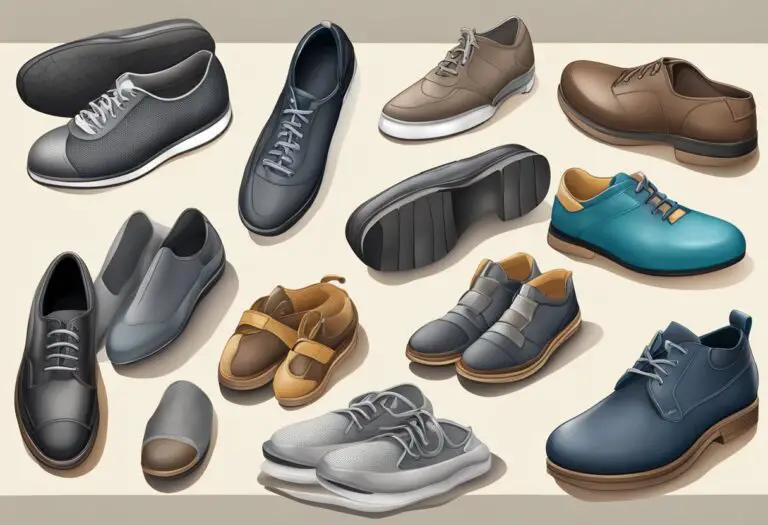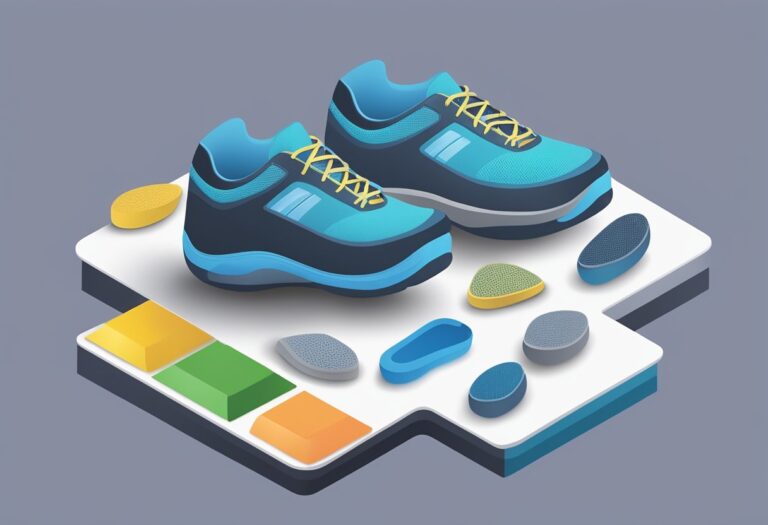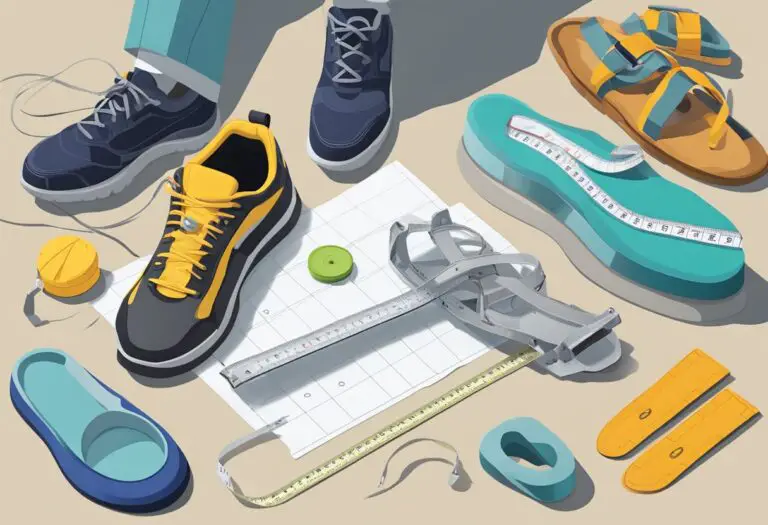How can I choose the right shoes for my foot type and shape
How can I choose the right shoes for my foot type and shape
When it comes to choosing the right shoes, many people tend to prioritize style over comfort and fit. However, wearing ill-fitting shoes can lead to a range of foot problems, from blisters and calluses to more serious issues like plantar fasciitis and even stress fractures. That’s why it’s important to choose shoes that are not only fashionable but also comfortable and supportive for your specific foot type and shape.

One of the first things to consider when choosing shoes is your foot type. Feet can be classified into three main categories: flat, neutral, or high-arched. Flat feet tend to have little to no arch, while high-arched feet have a more pronounced arch. Neutral feet fall somewhere in between. Knowing your foot type can help you determine what kind of support you need in your shoes, such as arch support for flat feet or cushioning for high-arched feet.
Another important factor to consider is your foot shape. Feet can be wide or narrow, with different toe shapes and lengths. Some people have bunions or other foot conditions that require special accommodations in their shoes. By taking into account your foot shape and any specific foot issues you may have, you can find shoes that fit comfortably and reduce the risk of foot problems.
Understanding Foot Types

Choosing the right shoes for your foot type and shape is crucial for comfort and preventing injuries. Understanding your foot type is the first step in selecting the right shoes. In this section, we will discuss how to identify your foot shape and arch type.
Identifying Your Foot Shape
The shape of your foot can affect how a shoe fits and feels. There are three common foot shapes: flat, neutral, and high-arched. To determine your foot shape, you can do a simple wet test. Wet your foot and step on a piece of paper, then examine the imprint.
- Flat feet: If your footprint shows the entire sole of your foot, you have flat feet. Flat feet can cause overpronation, which means your foot rolls inward excessively when you walk or run.
- Neutral feet: If your footprint shows a slight curve inward at the arch, you have neutral feet. Neutral feet have a natural pronation, which means your foot rolls inward slightly when you walk or run.
- High-arched feet: If your footprint shows a thin line along the outer edge of your foot, you have high-arched feet. High arches can cause underpronation, which means your foot rolls outward when you walk or run.
Arch Type and Pronation
Your arch type can also affect how a shoe fits and feels. There are three common arch types: low, medium, and high. To determine your arch type, you can do a simple arch test. Wet your foot and step on a piece of paper, then examine the imprint.
- Low arches: If your footprint shows almost the entire sole of your foot, you have low arches. Low arches can cause overpronation.
- Medium arches: If your footprint shows a moderate curve inward at the arch, you have medium arches. Medium arches have a natural pronation.
- High arches: If your footprint shows a thin line along the outer edge of your foot, you have high arches. High arches can cause underpronation.
Understanding your foot type and arch type is essential for selecting the right shoes. Different shoe brands offer various models that cater to different foot types and arch types. By understanding your foot type and arch type, you can choose a shoe that provides adequate support and comfort for your feet.
Factors to Consider When Choosing Shoes

When it comes to choosing the right shoes for your foot type and shape, there are several factors to consider. Here are some key factors to keep in mind:
Shoe Size and Fit
One of the most important factors to consider when choosing shoes is the size and fit. Shoes that are too small or too big can cause discomfort and even lead to foot problems. It’s important to measure your feet regularly and try on shoes in the size that fits you best. Make sure to walk around in the shoes and check for any rubbing or discomfort.
Material and Flexibility
The material and flexibility of a shoe can also affect the comfort and fit. Shoes made from breathable materials like leather or mesh can help keep your feet cool and dry. Flexibility is also important, as shoes that are too stiff can restrict movement and cause discomfort. Look for shoes that bend and flex easily, especially in the forefoot area.
Support and Cushioning
Support and cushioning are crucial for preventing foot injuries and providing comfort. Shoes with good arch support can help distribute weight evenly and reduce stress on the feet. Cushioning can also help absorb shock and reduce impact on the feet. Look for shoes with adequate support and cushioning that match your foot type and shape.
By considering these factors when choosing shoes, you can find a pair that fits well, feels comfortable, and supports your feet properly.
Shoe Selection for Different Activities
Choosing the right shoes for different activities is crucial to prevent injuries and provide comfort. Here are some tips on selecting shoes for different activities based on foot type and shape:
Running and Athletic Shoes
When selecting running or athletic shoes, it is important to consider the type of activity and foot type. For those with flat feet, shoes with motion control and stability features are recommended to provide support and prevent overpronation. For those with high arches, shoes with cushioning and flexibility are recommended to absorb shock and provide comfort.
For running, shoes with a low heel-to-toe drop and good traction are recommended to improve performance and reduce the risk of slipping. It is also important to choose shoes that fit well and have enough room for the toes to move freely.
Casual and Dress Shoes
Casual and dress shoes should be comfortable and fit well to prevent blisters and discomfort. It is important to choose shoes based on foot type and shape, as well as the occasion.
For those with wide feet, shoes with a wider toe box are recommended to prevent squeezing and discomfort. It is also important to consider the material and style of the shoe, as certain materials and styles may be more comfortable and suitable for different foot types.
Specialty Footwear
Specialty footwear, such as hiking boots and cycling shoes, should be selected based on the specific activity and foot type. For hiking, shoes with good traction and ankle support are recommended to prevent injuries and provide stability. For cycling, shoes with a stiff sole and good ventilation are recommended to improve performance and prevent discomfort.
It is important to try on different types of specialty footwear and choose shoes that fit well and provide the necessary support and comfort for the specific activity.
Maintaining Foot Health

Importance of Proper Footwear
Wearing proper footwear is essential for maintaining foot health. It is important to choose shoes that fit well and provide adequate support for your foot type and shape. Shoes that are too tight or too loose can cause discomfort, pain, and even injury.
When selecting shoes, consider the following:
- Arch support: Shoes with proper arch support can help prevent foot pain and fatigue.
- Cushioning: Shoes with adequate cushioning can help absorb shock and reduce impact on your feet.
- Toe box: Shoes with a wide enough toe box can prevent crowding and help reduce the risk of blisters and calluses.
- Size: Make sure to measure your feet regularly and choose shoes that fit properly. Shoes that are too small can cause bunions and other foot problems, while shoes that are too big can cause friction and blisters.
By choosing the right shoes for your foot type and shape, you can help prevent foot injuries and maintain overall foot health.
Common Foot Problems
Even with proper footwear, foot problems can still arise. Some common foot problems include:
- Plantar fasciitis: This condition occurs when the plantar fascia, a band of tissue that runs along the bottom of the foot, becomes inflamed. It can cause pain in the heel and arch of the foot.
- Bunions: A bunion is a bony bump that forms on the joint at the base of the big toe. It can cause pain and discomfort and may require surgery to correct.
- Corns and calluses: These are thick, hardened areas of skin that can form on the feet due to friction or pressure. They can be painful and may require treatment to remove.
If you experience any foot problems, it is important to seek medical attention. Your doctor or podiatrist can recommend treatments and strategies for maintaining foot health.







